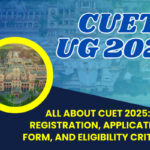ANTHROPOLOGY (303) Syllabus for Class 12
Unit-1: Physical Anthropology:
- Preliminary knowledge of Human genetics. Mendel’s Laws of heredity: Monohybrid and Dihybrid ratio.
- Definition of Race and Racial criteria, significance of skin color, eye form and color, head form, and ABa blood groups as racial criteria.
- Racial classification, distinctive physical features, and geographical distribution of the major racial groups of man: Caucasoid, Mongoloid, Negroid, and Australoid.
Unit-2: Prehistoric Archaeology:
- Tool Making: Techniques of manufacturing core and flake tools, primary and secondary flaking, pressure flaking, grinding and polishing. Materials used in making prehistoric tools.
- Tool families: Pebble tools, Handaxe, Cleaver, Scrapers, Microliths, Points, Blades, Awl, Graver, Celts, Sickles, Spear-head, Arrow-head, and Bone tools.
- Prehistoric Cultures: A brief outline of the following prehistoric cultures of the Paleolithic, Mesolithic, and Neolithic periods.
- A comparative study of the salient features of Paleolithic and Neolithic cultures.
Unit-3: Material culture and Economic Anthropology:
- Economic life: Meaning and aspects, characteristic features of primitive or simple economic systems.
- Subsistence economy: Domestication of animals – pastoralism, agriculture – shifting cultivation, horticulture, terrace cultivation, and plough cultivation.
- Brief outline of the methods of hunting, fishing, and agriculture with reference to various communities of North East India as far as practicable.
Unit-4: Social Anthropology and Ethnography:
A. Social Anthropology:
- Family: Definition, forms and types: nuclear family, joint family, family of orientation, family of procreation, monogamous and polygamous (polygynous and polyandrous).
- Clustered relationship in a nuclear family.
- Rules of residence: Patrilocal, matrilocal, neolocal, avancolocal, bi-local, matripatrilocal. Rules of descent: Patrilineal and matrilineal descent.
- Functions of family, social nature of family.
B. Ethnography:
- A brief outline of the land and people of North-East India.
- Study of material culture and economic life of the following communities:
- The Garo: Shifting or Jhum cultivation.
- The Mishing: Plough cultivation.
- A study of social organization of the Ao Naga and the Apatani.
Unit-5: Ecology:
- Meaning and definition of ecology and environment.
- Elements of the environment: Solid, liquid, and gas.
- Physical or abiotic environment, biological or biotic environment, and socio-cultural environment.
- Man as the main agent to disturb the ecological balance.
Note: There will be one Question Paper which will have 50 questions, out of which 40 questions need to be attempted.
Prepare to excel in CUET UG 2025 with our all-inclusive CUET course, designed to cover the complete CUET UG 2025 syllabus, exam pattern, and admission process. Our comprehensive training is ideal for students aspiring to secure admission in prestigious institutions like Delhi University (DU), Banaras Hindu University (BHU), and Jawaharlal Nehru University (JNU). With specialized CUET UG 2025 online coaching, subject-wise MCQs, and focused practice sets, we provide tailored solutions for your preparation. Our CUET UG 2025 Jaipur program includes a crash course, foundation course, and a thorough test series to help you succeed. Stay updated with the CUET UG 2025 application form, exam dates, and result information as we guide you through every step of the process. Join Jaipur’s top CUET coaching to maximize your potential and secure a future at leading universities!


